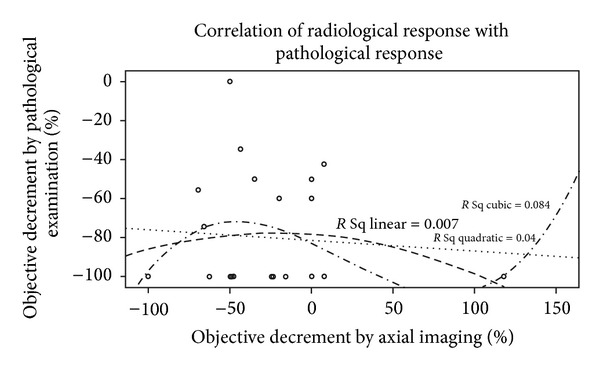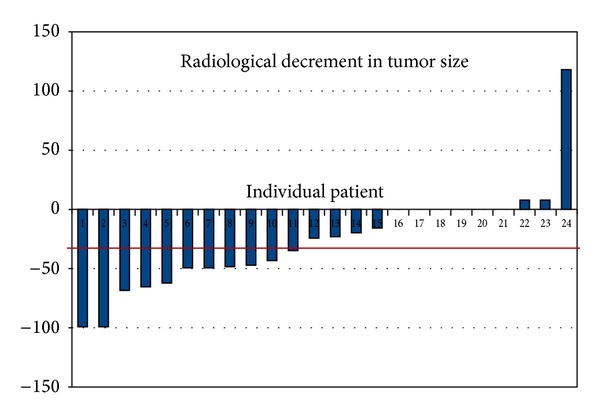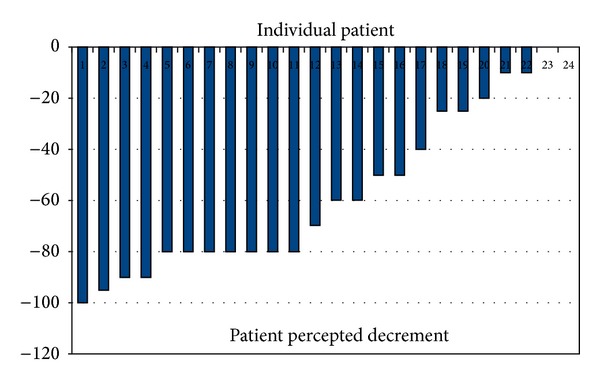Is There a Limitation of RECIST Criteria in Prediction of Pathological Response, in Head and Neck Cancers, to Postinduction Chemotherapy?
引用次数: 18
Abstract
This study studied the coorelation between radiological response to induction chemotherapy and acheivement of pCR or near pCR. It was a retrospective analysis in which all patients who received NACT from 2008 till april 2012 were subjected to inclusion criteria. Coorelation analysis was performed between CR + PR and acheivement of pCR or near pCR. Twenty four patients were identified.The primary site of tumor was oral cavity in 19 patients (79.2%), maxilla in 2 patients (4.2%), laryngopharynx in 2 patients (4.2%) and oropharynx in 1 patient (4.2%). The clinical stage was stage IVA in 16 patients ( 66.7%) and IVB in 8 patients (33.3%). The overall response rates ie a combination of CR and PR was seen in 11patients (45.8%). The pCR was seen in 15 patients (62.5%) and rest had near pCR. There was no linear coorelation between radiological size decrement and tumor response. On coorelation analysis the spearman correlation coefficent was −0.039 (P = 0.857). This suggest that presently used radiological response criterias for response assesment in head and neck cancers severly limit our ability to identify patients who would have pCR or near pCR.



RECIST标准在预测头颈部肿瘤诱导后化疗的病理反应方面存在局限性吗?
本研究研究了诱导化疗的放射反应与pCR或近pCR的实现之间的相关性。这是一项回顾性分析,所有2008年至2012年4月接受NACT治疗的患者均符合纳入标准。进行CR + PR与pCR或近pCR结果的相关性分析。确定了24例患者。肿瘤原发部位为口腔19例(79.2%),上颌2例(4.2%),喉咽2例(4.2%),口咽部1例(4.2%)。临床分期为IVA期16例(66.7%),IVB期8例(33.3%)。11例(45.8%)患者的总有效率为CR和PR的结合。15例患者(62.5%)出现pCR,其余患者接近pCR。放射学尺寸减小与肿瘤反应之间无线性相关关系。相关分析spearman相关系数为-0.039 (P = 0.857)。这表明,目前用于头颈癌反应评估的放射反应标准严重限制了我们识别可能出现pCR或接近pCR的患者的能力。
本文章由计算机程序翻译,如有差异,请以英文原文为准。
求助全文
约1分钟内获得全文
求助全文

 求助内容:
求助内容: 应助结果提醒方式:
应助结果提醒方式:


